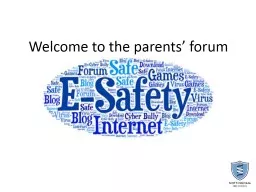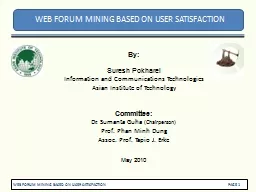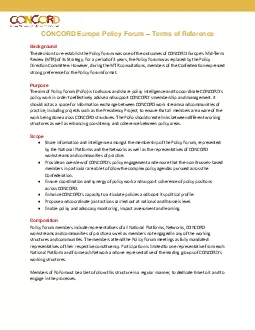PPT-Welcome to the parents’ forum
Author : lois-ondreau | Published Date : 2017-07-09
Facts Social media Cyberbullying Keeping your child safe School policy Internet facts The internet is a fantastic tool and an ever increasing part of our daily lives
Presentation Embed Code
Download Presentation
Download Presentation The PPT/PDF document "Welcome to the parents’ forum" is the property of its rightful owner. Permission is granted to download and print the materials on this website for personal, non-commercial use only, and to display it on your personal computer provided you do not modify the materials and that you retain all copyright notices contained in the materials. By downloading content from our website, you accept the terms of this agreement.
Welcome to the parents’ forum: Transcript
Download Rules Of Document
"Welcome to the parents’ forum"The content belongs to its owner. You may download and print it for personal use, without modification, and keep all copyright notices. By downloading, you agree to these terms.
Related Documents














